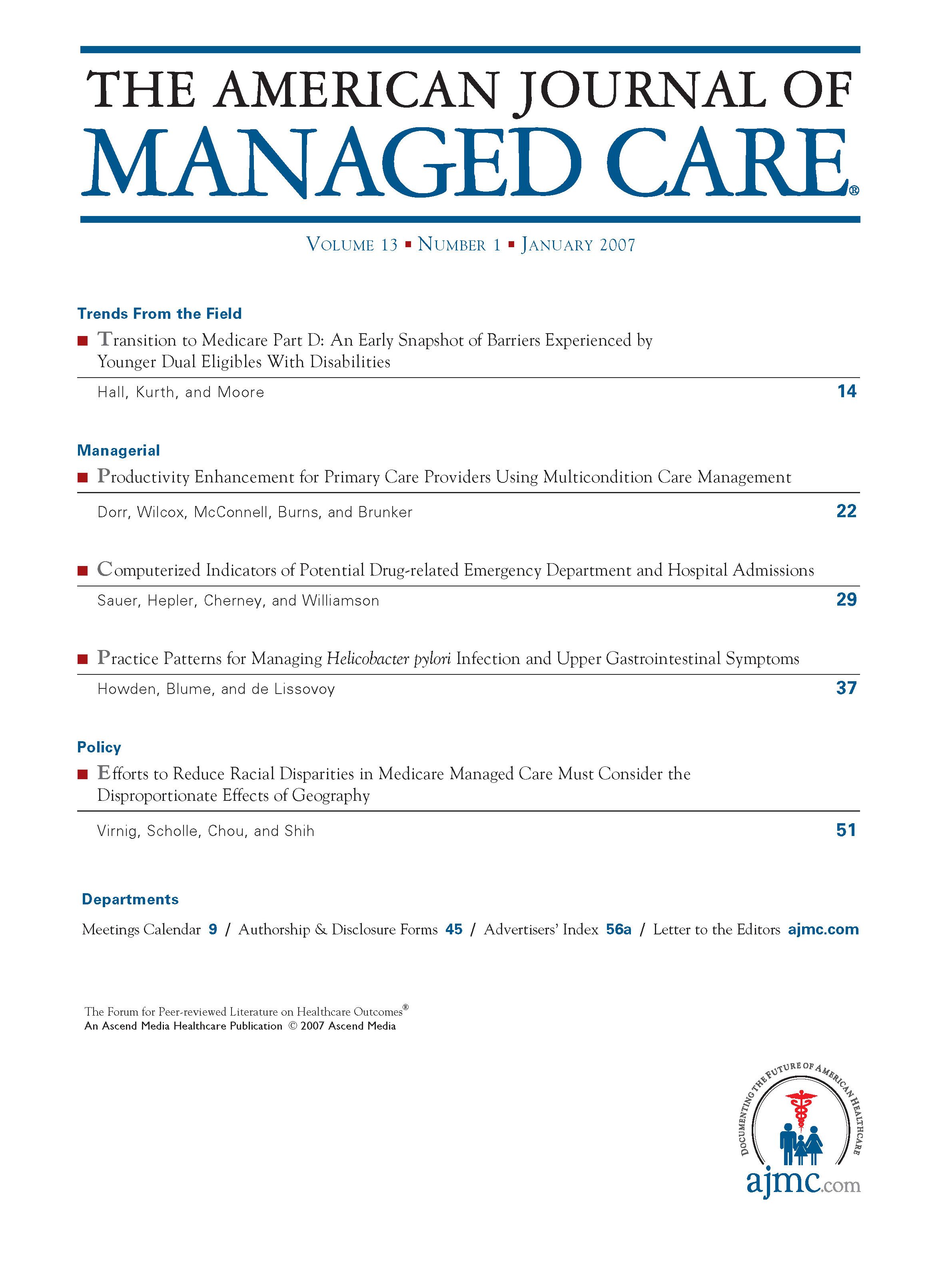- Center on Health Equity & Access
- Clinical
- Health Care Cost
- Health Care Delivery
- Insurance
- Policy
- Technology
- Value-Based Care
Reassembling Our View of Vulnerable Populations
TO THE EDITORS:
The
American Journal of Managed Care
The article titled "Impact of Copays in Vulnerable Populations" on the November supplement of makes an important contribution to the literature through thecomprehensive review of the healthcare experiences of a wide range of different vulnerable populationsand their sensitivity to increasing copayments.1 This review describes the experiences of thepoor, the uninsured, the chronically ill, the elderly, the mentally ill, and others. What is missing fromthis review, however, is a reflection that these vulnerable groups overlap considerably (eg, the elderlyare more likely to be chronically ill and also be poor), and that their experiences are likely toreflect the multiple risk factors that they experience. It is likely that increasing cost sharing mayhave exaggerated effects on prescription filling and use among those who are both elderly and poor.
Such overlap of populations is nothing new, but rarely do we as researchers explicitly recognizethe concomitant and potentially combinatorial effects of risk factors, such as poverty and lack ofinsurance. Shi and Stevens are only among the latest to argue that we view most vulnerable populationsby the collection of health or healthcare risk factors they possess, and work harder to understandtheir interactivity.2 Previous studies have indeed counted the number of risk factors a personhas and have shown clear gradients in health services use, quality of care, and health status.3-5 At itssimplest and arguably finest, however, the vulnerability construct can be measured by examiningthose with multiple risk factors versus 1 or none (as the authors smartly did in reviewing the experiencesof dual eligibles for Medicare and Medicaid).
The general lack of discussion concerning multiple risk factors from the review is not the fault ofthe authors, as it is something that has been missing almost entirely from the literature that was availablefor review. While each of the studies reviewed fills an important gap in knowledge, it is time thatwe begin to rethink vulnerable populations as comprehensive wholes, not as just distinct categories,however a difficult challenge. Researchers must identify strategies to comprehensively measure vulnerablepopulations; administrators need to be flexible enough to design or modify programs toaccount for multiple, overlapping risks; and practitioners need information and tools for how to servepatients who have multiple risks or comorbidities.
The supplement article provides an important first step because it effectively defines the range ofresearch knowledge on the experiences of many different vulnerable groups. The next important stepis to reassemble this information and recognize that in pharmacy and clinic practice, as elsewhere,vulnerability is considerably more than the sum of its parts.
Gregory D. Stevens, PhD
Assistant Professor of Research
University of Southern California Keck School of Medicine
Alhambra, California
Am J Manag Care.
1. Impact of copays on vulnerable populations. 2006;12(13 suppl):S359-S363.
Vulnerable Populations in the United States.
2. Shi L, Stevens GD. San Francisco, Calif: Jossey-Bass; 2005.
Health Serv Res.
3. Stevens GD, Seid M, Mistry R, Halfon N. Disparities in primary care for vulnerable children: the influence of multiplerisk factors. 2006;41:507-531.
J Gen Intern
Med.
4. Shi L, Stevens GD. Vulnerability and unmet health care needs. The influence of multiple risk factors. 2005;20:148-154.
Med Care.
5. Shi L, Stevens GD. Vulnerability and the receipt of recommended preventive services: the influence of multiplerisk factors. 2005;43:193-198.

Dual-Eligible Beneficiaries’ Grocery Supplemental Benefit Use and Health Care Utilization
October 23rd 2025Medicare Advantage grocery supplemental benefit use is associated with increased outpatient care, suggesting that policy changes allowing for nonmedical supplemental benefits could improve beneficiaries’ health, especially for dual-eligible beneficiaries.
Read More
Discharge Timing and Associations With Outcomes Following Heart Failure Hospitalization
October 9th 2025A retrospective multicenter study found that patients with heart failure discharged by noon had higher short- and long-term mortality and increased early readmission rates compared with afternoon discharges.
Read More

